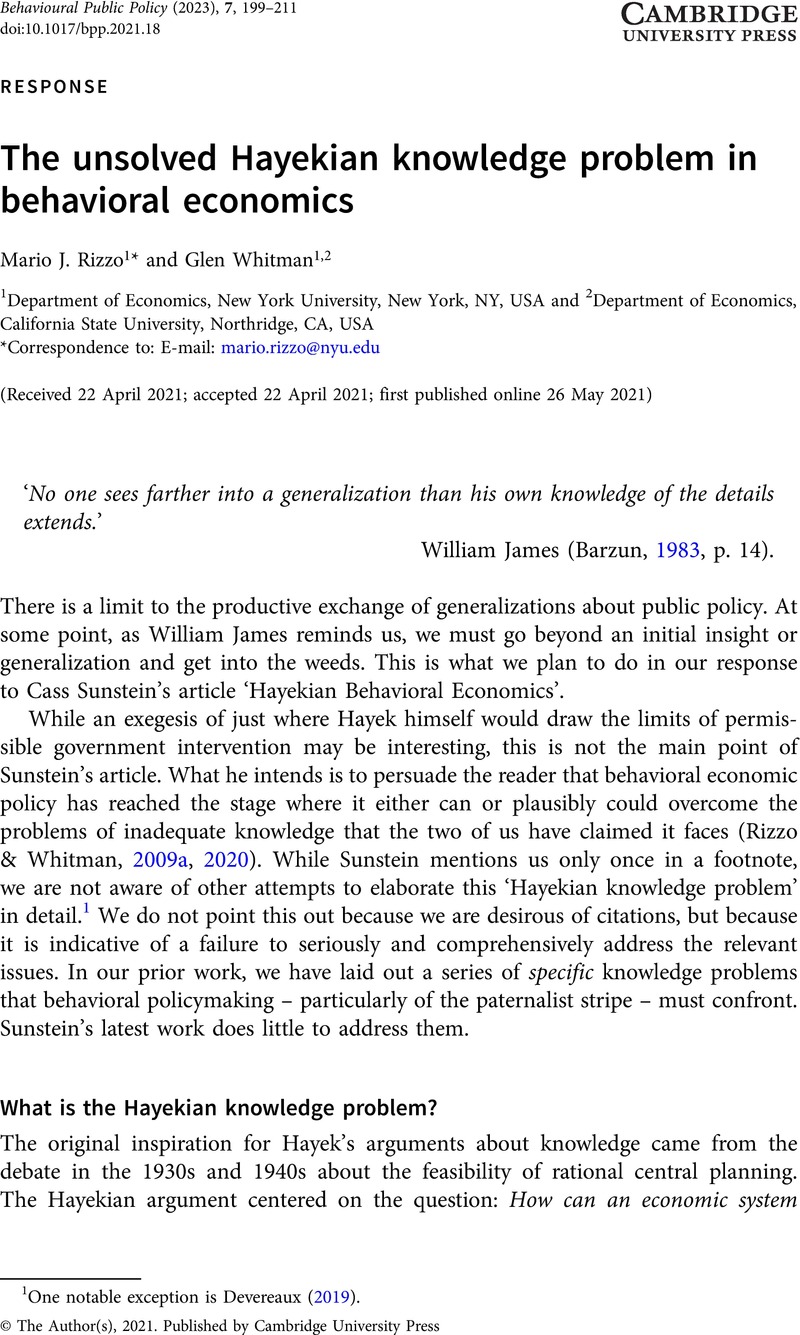Crossref Citations
This article has been cited by the following publications. This list is generated based on data provided by Crossref.
Rizzo, Mario J.
2021.
The Paternalistic Turn in Behavioral Law and Economics: A Critique.
Review of Law & Economics,
Vol. 17,
Issue. 2,
p.
253.
Braganza, Oliver
2022.
Proxyeconomics, a theory and model of proxy-based competition and cultural evolution.
Royal Society Open Science,
Vol. 9,
Issue. 2,
Dekker, Erwin
and
Remic, Blaž
2024.
Hayek's extended mind: on the (im)possibility of Austrian behavioural economics.
Journal of Institutional Economics,
Vol. 20,
Issue. ,
Dold, Malte
and
Rizzo, Mario
2024.
Hayekian psychological economics: a preliminary look.
Behavioural Public Policy,
Vol. 8,
Issue. 4,
p.
773.
Mills, Stuart
2024.
Being good and doing good in behavioral policymaking.
Public Administration Review,
Festré, Agnès
and
Østbye, Stein
2024.
The tacit dimension and behavioural public policy: insights from Hayek and Polanyi.
Behavioural Public Policy,
p.
1.
Fumagalli, Roberto
2025.
Standard rationality versus inclusive rationality: a critical assessment.
Behavioural Public Policy,
p.
1.
Braganza, Oliver
2025.
Nudging society to consume—the aggregate consequences of consumption nudges.
Review of Evolutionary Political Economy,



